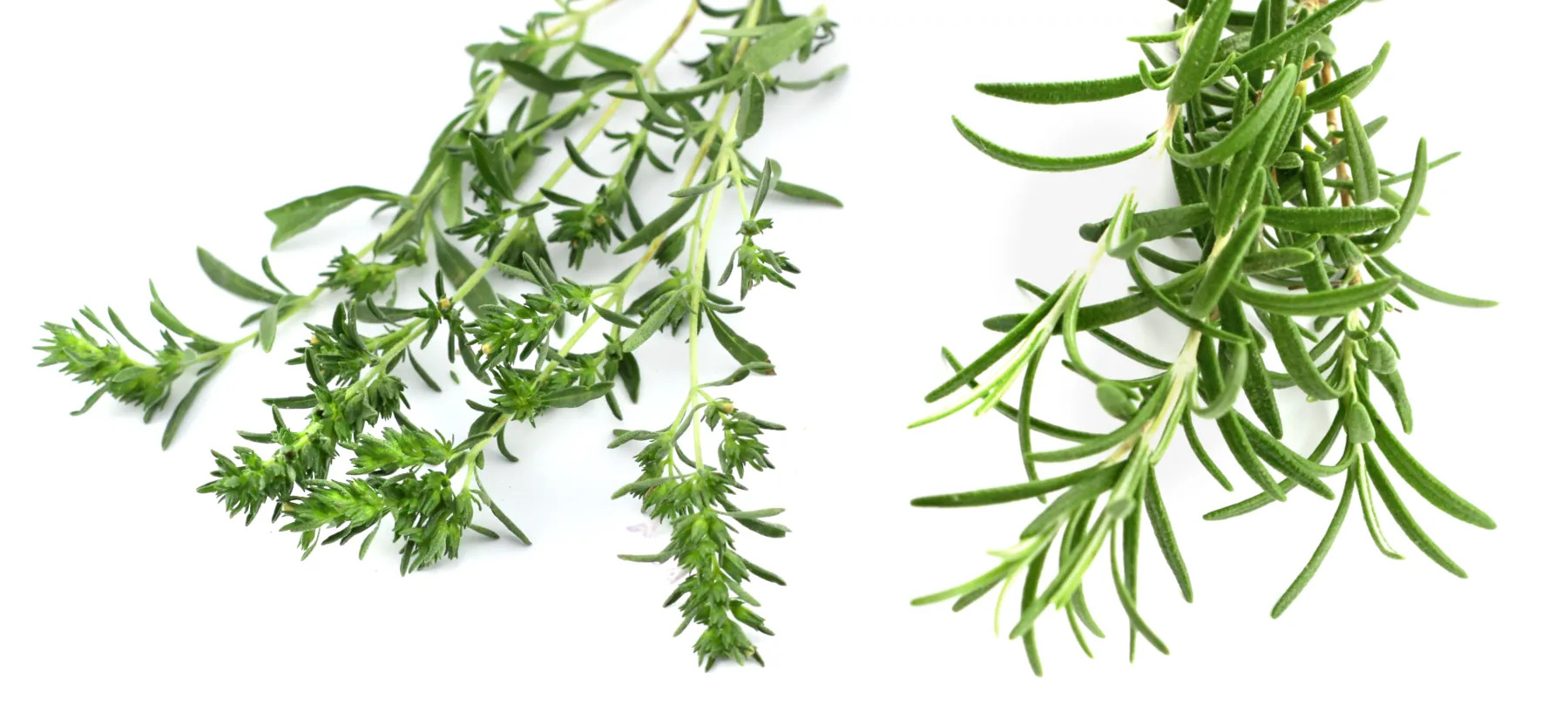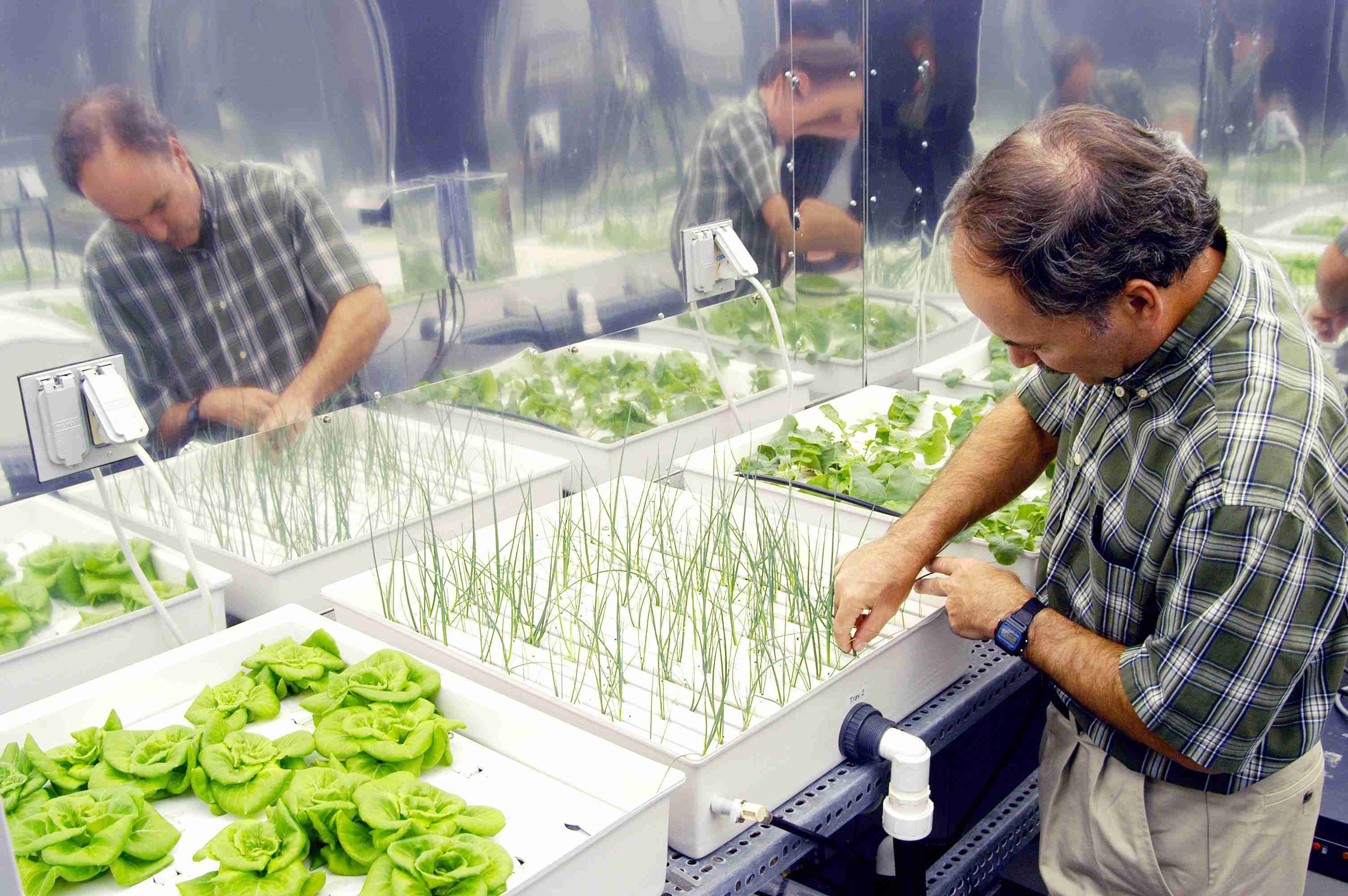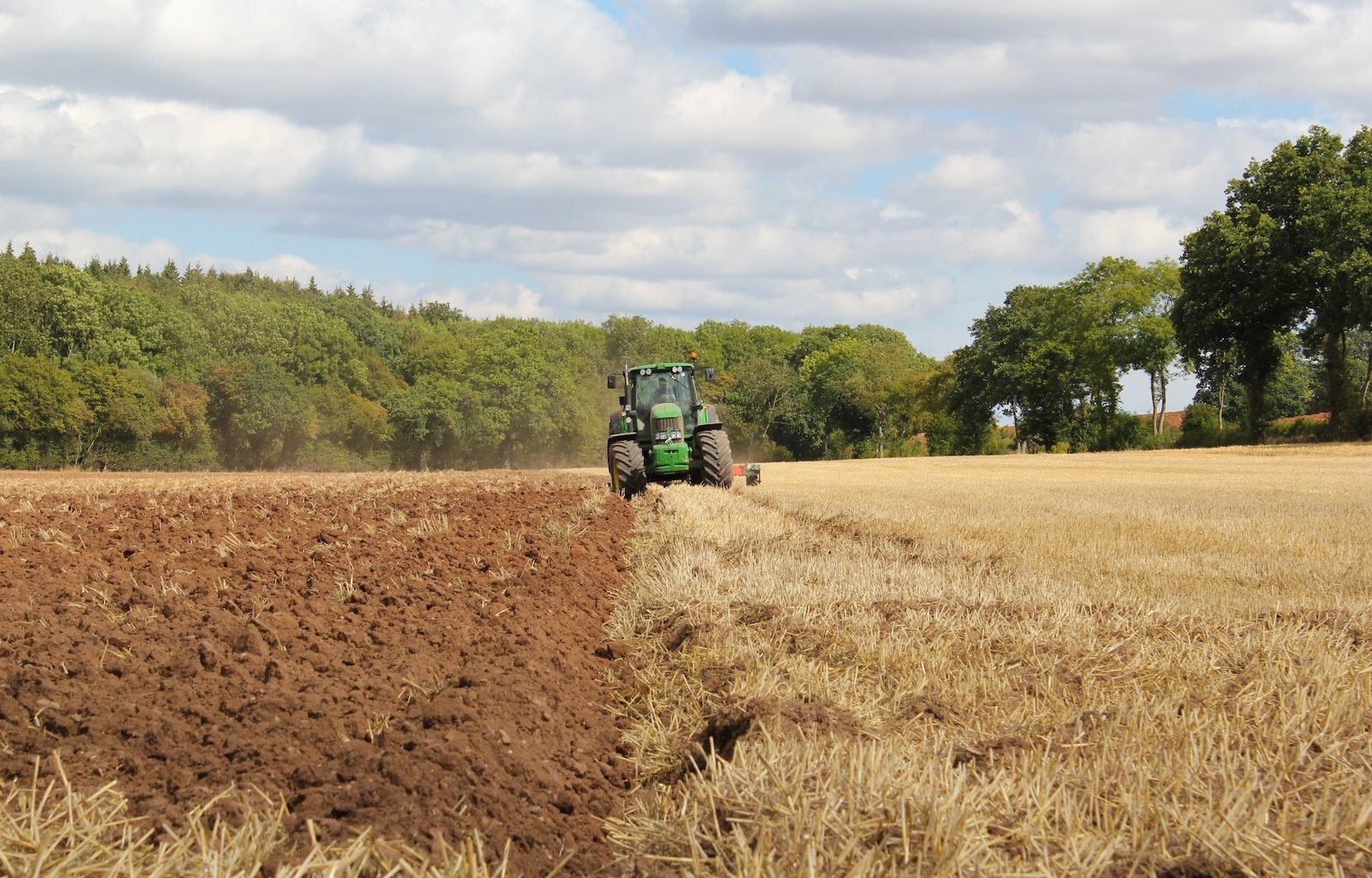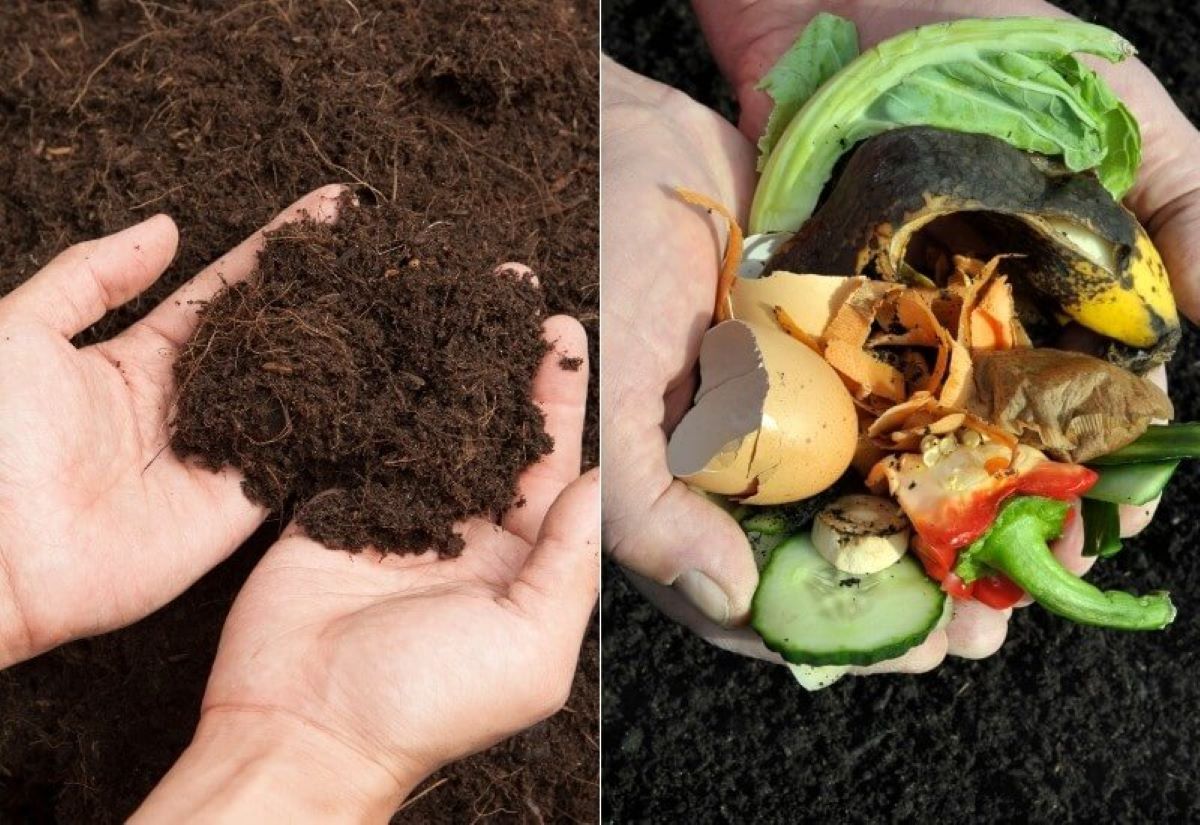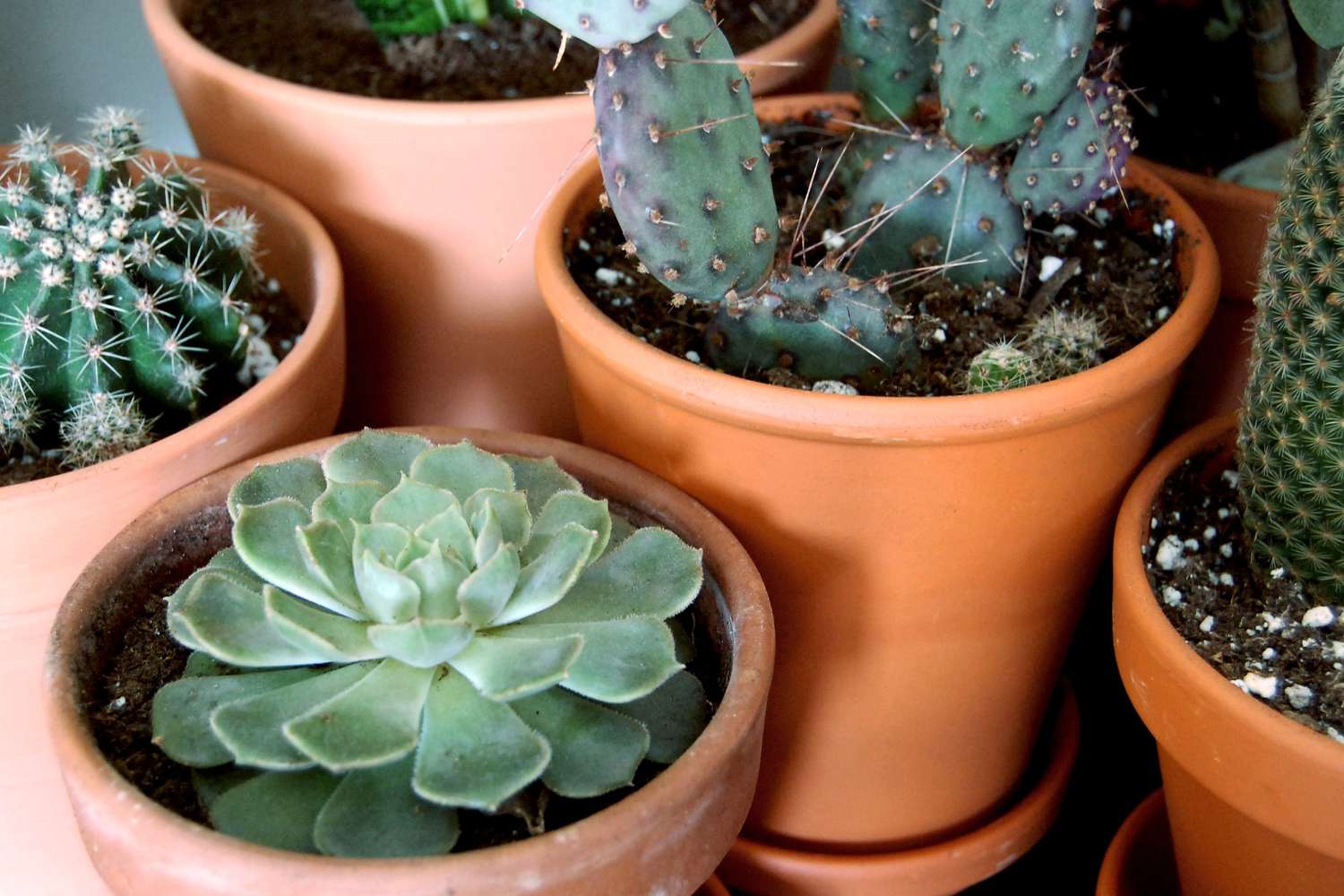Home>Gardening News and Trends>What Are The Different Branches Of Botany
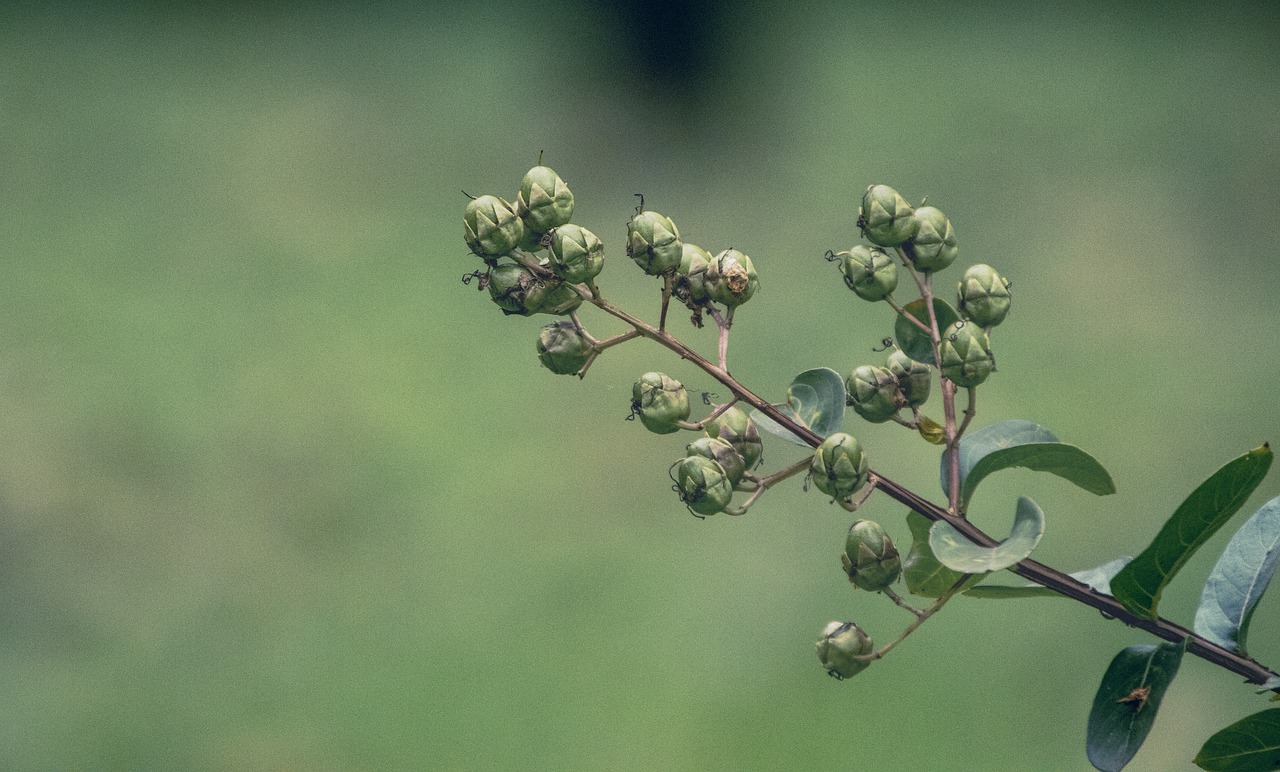

Gardening News and Trends
What Are The Different Branches Of Botany
Modified: January 22, 2024
Discover the latest news in the world of botany as we explore the different branches and their fascinating contributions to scientific research and environmental conservation.
(Many of the links in this article redirect to a specific reviewed product. Your purchase of these products through affiliate links helps to generate commission for Chicagolandgardening.com, at no extra cost. Learn more)
Table of Contents
Introduction
Botany, the scientific study of plants, is a vast field that encompasses various branches, each focusing on different aspects of plant life. From the classification and identification of plants to their anatomy, genetics, and interactions with the environment, botany offers a comprehensive understanding of the plant kingdom.
Plants play a crucial role in our ecosystem, providing us with food, medicine, and a breathable atmosphere. The study of botany allows us to delve into the intricate world of plants, exploring their structures, functions, and evolutionary history. By understanding plants better, we can develop sustainable approaches to agriculture, conservation, and the exploration of new drugs.
In this article, we will explore some of the different branches of botany and the fascinating areas of study within each discipline. From field botany to paleobotany, each branch offers unique insights into the world of plants and their various adaptations.
So, let’s embark on a journey through the diverse disciplines of botany, understanding the significance of each branch and how they contribute to our knowledge of plants.
Field Botany
Field botany, also known as plant collecting or plant hunting, is a branch of botany that focuses on the collection, documentation, and study of plants in their natural habitats. Field botanists venture into diverse ecosystems, from rainforests to deserts, to discover and document plant species.
Field botany involves various techniques and skills to accurately identify, classify, and collect plant specimens. Botanists often use field guides, botanical keys, and observation to identify plants based on their unique characteristics such as leaf shape, flower structure, and growth habits.
Botanical expeditions by field botanists contribute to the discovery and cataloging of new plant species, as well as the documentation of rare or endangered species. Through their efforts, field botanists play a crucial role in biodiversity conservation and understanding the distribution of plant species.
Field botany also involves studying the relationships between plants and their environment, including their interaction with other organisms, such as pollinators, pests, and predators. By studying plants in their natural habitats, field botanists can gain insights into how plants adapt and thrive in different ecosystems.
One of the key tasks of field botany is the collection and preservation of plant specimens. These specimens are carefully collected, dried, and stored in herbariums, which serve as valuable resources for future research and scientific study. By analyzing these specimens, botanists can examine plant anatomy, conduct genetic studies, and investigate plant evolution.
Overall, field botany plays a fundamental role in expanding our knowledge of plant diversity, their remarkable adaptations, and their ecological significance. The work of field botanists is instrumental in advancing our understanding of the plant kingdom and contributing to efforts in conservation and environmental stewardship.
Plant Taxonomy
Plant taxonomy is a branch of botany that deals with the classification, identification, and naming of plants. It provides a systematic framework for organizing and categorizing plant species based on their shared characteristics and evolutionary relationships.
Taxonomists use a variety of techniques and criteria to classify plants. These include morphological features such as leaf shape, flower structure, and fruit type, as well as anatomical, cytological, and molecular characteristics.
Plant taxonomy aims to create a hierarchical system of classification that reflects the evolutionary relationships between plants. This system starts with the broadest categories, such as the division, and gradually progresses to smaller groups, such as the genus and species.
The scientific naming of plants is an essential aspect of plant taxonomy. Each plant is given a unique binomial name consisting of a genus and species name. The binomial nomenclature system, developed by Carl Linnaeus, ensures that each plant has a globally recognized and standardized name.
Plant taxonomists play a crucial role in identifying and documenting new plant species, as well as studying existing plants to determine their relationships with other species. They use various tools and techniques, such as microscopic analysis, DNA sequencing, and comparative anatomy, to classify and differentiate plants.
Plant taxonomy not only provides a means of organizing and understanding plant diversity but also has practical applications. It aids in the identification of medicinal plants, facilitates plant breeding and crop improvement, and supports conservation efforts by identifying endangered species and monitoring their populations.
Advances in molecular biology and DNA sequencing techniques have revolutionized plant taxonomy, allowing for more accurate and precise classification. These tools help uncover previously unknown relationships between plant species and provide insights into their evolutionary history.
In summary, plant taxonomy is a critical branch of botany that seeks to understand the diversity of plant species and their evolutionary relationships. By classifying and naming plants, taxonomists contribute to our understanding of the plant kingdom and support various practical applications in agriculture, medicine, and conservation.
Plant Anatomy
Plant anatomy is a branch of botany that focuses on studying the internal structures and organization of plants. It involves the microscopic examination and analysis of the various tissues, cells, and organs that make up a plant’s body.
Plant anatomy provides a detailed understanding of how plants are constructed and how their different parts function together to support growth, reproduction, and nutrient uptake. By studying plant anatomy, botanists can explore the diverse adaptations and strategies that plants have developed to survive and thrive in different environments.
One of the key components of plant anatomy is the study of plant tissues. Plant tissues are groups of cells that work together to perform specific functions. These tissues include meristematic tissue, which is responsible for plant growth, and permanent tissues, which are involved in functions like photosynthesis, transport, and support.
Another important aspect of plant anatomy is the examination of the different organs of a plant. These organs include the roots, stems, leaves, flowers, and fruits. Each organ has specific structures and functions that contribute to the overall growth and survival of the plant.
The root system of a plant, for example, absorbs water and nutrients from the soil and anchors the plant in place. The stem provides support for the plant and facilitates the transport of water, nutrients, and sugars between different parts. Leaves are responsible for photosynthesis, producing energy for the plant, while flowers and fruits are involved in reproduction and seed dispersal.
In addition to the study of tissues and organs, plant anatomy also includes the examination of cellular structures and organelles. This involves analyzing the structure and function of cells, cell walls, chloroplasts, mitochondria, and other components within the cells that are essential for plant growth and development.
Understanding plant anatomy is vital in various scientific disciplines, such as plant physiology, plant pathology, and plant breeding. It provides a foundation for studying the physiological processes and interactions within plants, as well as the identification and diagnosis of plant diseases.
Overall, plant anatomy is a key branch of botany that unravels the intricate structures and functions of plants. By studying plant anatomy, we gain insights into the fascinating world of plants and their remarkable adaptations to different environments.
Plant Morphology
Plant morphology is the branch of botany that examines and describes the physical forms and structures of plants. It focuses on the external features of plants, such as their shape, size, color, and the arrangements of their various parts.
The study of plant morphology provides insights into the diversity and adaptations of plants. It helps in identifying and classifying different plant species based on their distinct morphological characteristics.
Plant morphology encompasses a range of plant structures, including roots, stems, leaves, flowers, and fruits. These structures exhibit various forms and arrangements that contribute to the overall appearance and function of the plant.
The root system of a plant, for instance, can vary in morphology depending on whether it is taproot or fibrous. Similarly, the stems of plants can be erect, climbing, or creeping, while leaves can exhibit different shapes, margins, and arrangements on the stem.
Flowers, an essential part of the plant reproductive process, come in a wide range of forms and colors. They can have various petal arrangements, specialized structures for attracting pollinators, and distinctive floral patterns.
Fruits, the mature ovaries of flowering plants, also show diverse morphological characteristics. They can be fleshy or dry, spherical or elongated, and have different mechanisms for seed dispersal.
Plant morphology also encompasses the study of plant growth patterns and developmental processes. It explores how plants undergo changes in form and structure as they develop from seeds to mature individuals.
Understanding plant morphology is crucial in various fields, including agriculture, horticulture, and plant breeding. It helps in identifying desirable plant traits, selecting suitable plant varieties for specific purposes, and developing improved cultivars through selective breeding.
Furthermore, plant morphology aids in the identification of plants in fieldwork, botanical gardens, and botanical illustration. It provides a language for describing and communicating the characteristics of plants that are important for identification and research purposes.
In summary, plant morphology is a vital branch of botany that analyzes the physical structures and forms of plants. By studying the morphology of plants, we gain insights into their diversity, adaptations, and developmental processes, enhancing our understanding and appreciation of the plant kingdom.
Plant Physiology
Plant physiology is the branch of botany that investigates the functioning and processes that occur within plants. It focuses on understanding how plants grow, develop, and respond to their environment at the cellular and molecular levels.
Plant physiology encompasses various aspects, including photosynthesis, respiration, transpiration, hormone regulation, and nutrient uptake. By studying these processes, botanists gain insights into how plants convert light energy into chemical energy, regulate their growth and development, and adapt to different environmental conditions.
Photosynthesis is a central process in plant physiology. It involves the conversion of light energy into chemical energy, which is stored in the form of carbohydrates. Through photosynthesis, plants produce oxygen and supply the Earth with essential nutrients for other organisms.
Respiration is another vital process in plant physiology. It involves the breakdown of carbohydrates in plant cells to release energy. Through respiration, plants generate the energy needed for growth, maintenance, reproduction, and other functions.
Transpiration is the loss of water vapor through the stomata in plant leaves. It plays a crucial role in regulating the water balance within plants and facilitating the transport of water and nutrients from the roots to other parts of the plant.
Plant hormones, such as auxins, gibberellins, cytokinins, abscisic acid, and ethylene, regulate various physiological processes. These hormones control plant growth, flowering, fruit ripening, and responses to environmental stimuli like light and gravity.
Plant physiology also encompasses the study of nutrient uptake and assimilation. Plants absorb essential elements, such as nitrogen, phosphorus, and potassium, from the soil and incorporate them into their tissues to support growth and development.
Understanding plant physiology has broad implications for agriculture, horticulture, and crop improvement. By studying plant physiological processes, scientists can develop strategies to enhance crop yield, improve stress tolerance, and optimize resource utilization.
Furthermore, plant physiology contributes to ecological research by examining how plants interact with other organisms and their environment. It helps in understanding plant responses to climate change, the impact of pollution on plant health, and the role of plants in ecosystem dynamics.
In summary, plant physiology is a significant branch of botany that investigates the fundamental processes occurring within plants. It provides insights into how plants obtain energy, synthesize and utilize nutrients, regulate growth and development, and interact with their surroundings. By understanding plant physiology, we can better appreciate the complexity and adaptability of plants in their natural environments.
Plant Ecology
Plant ecology is the branch of botany that focuses on the study of plants in relation to their environment. It examines how plants interact with other organisms and their physical surroundings, and how these interactions shape the distribution, abundance, and diversity of plant species.
Plant ecology encompasses various aspects, including the study of plant communities, ecological interactions, patterns of vegetation distribution, and the influence of environmental factors on plant growth and survival.
Plant communities are groups of plant species that coexist and interact within a particular habitat. Plant ecologists study the composition, structure, and dynamics of these communities to understand the patterns of species diversity and the ecological processes that shape them.
Ecological interactions play a crucial role in plant ecology. Plants interact with other organisms, such as pollinators, herbivores, and symbiotic partners, influencing their reproduction, dispersal, and survival. These interactions have cascading effects on ecosystem functioning and biodiversity.
Another key aspect of plant ecology is the study of vegetation distribution patterns. Plant ecologists investigate how plants are distributed across different habitats and regions, exploring factors such as climate, soil composition, and disturbances that influence these patterns.
Environmental factors, including temperature, rainfall, sunlight, and soil nutrients, strongly influence plant growth and adaptation. Plant ecologists study how plants respond and adapt to these factors, examining physiological, morphological, and phenological adaptations that allow plants to survive in different habitats.
Plant ecology plays a crucial role in understanding ecosystem functioning and conservation. By studying plant interactions and their responses to environmental changes, ecologists can assess the stability and resilience of ecosystems, identify threatened plant communities, and develop strategies for their preservation.
Furthermore, plant ecology contributes to numerous fields, including invasive species management, ecological restoration, and biodiversity conservation. Understanding the ecological relationships between plants and their environment helps in developing effective strategies for the management and restoration of ecosystems.
Plant ecology also provides essential insights into global environmental issues, such as climate change and habitat loss. By studying the responses of plant communities to these challenges, scientists can predict their future dynamics and assess the potential impacts on ecosystem health.
In summary, plant ecology is a vital branch of botany that explores the interactions between plants and their environment. It provides valuable knowledge on species distribution, ecological processes, and the impacts of environmental changes. By understanding plant ecology, we can better appreciate the intricate relationships between plants and their ecosystems, leading to more informed conservation and sustainable management practices.
Plant Genetics
Plant genetics is the branch of botany that focuses on the study of genetic variation, inheritance, and the molecular mechanisms underlying plant traits. It explores the genetic makeup of plants and how genes contribute to their growth, development, and responses to the environment.
Advances in plant genetics have revolutionized the understanding of plant biology and have practical applications in agriculture, horticulture, and crop improvement.
Plant genetics involves studying various aspects related to the genetic makeup of plants, including genome structure and organization, gene expression, gene regulation, and the role of genetics in plant evolution and adaptation.
One of the key areas of study in plant genetics is plant genomics, which involves sequencing and analyzing the entire DNA sequence of plant genomes. This allows researchers to identify genes, understand their function, and investigate genetic variation within and between plant species.
Genetic mapping is another crucial aspect of plant genetics. It involves locating genes and genetic markers on chromosomes, which helps in understanding the inheritance of traits and identifying genomic regions associated with specific characteristics, such as disease resistance or yield potential.
Plant genetics also involves the study of gene expression and regulation. Researchers investigate how genes are turned on or off in response to internal and external cues, and how this influences plant growth, development, and adaptation to environmental conditions.
Understanding plant genetics has practical applications in crop improvement. Plant breeders use genetic information to develop new plant varieties with improved traits, such as increased yield, disease resistance, and nutritional value.
Plant genetics also plays a role in identifying and conserving genetic resources. By studying the genetic diversity of plant populations, researchers can identify unique or rare genetic traits that may be valuable for future breeding and conservation efforts.
Genetic engineering, a powerful tool in plant genetics, allows scientists to introduce specific genes into plants to enhance desired traits or introduce new traits altogether. This technology has been used to develop genetically modified crops with traits such as insect resistance, drought tolerance, and increased nutrient content.
In summary, plant genetics is a vital branch of botany that investigates the genetic makeup of plants and how genes contribute to their growth, development, and adaptation. By understanding plant genetics, we can improve crop productivity, conserve genetic resources, and harness the potential of plants to meet the challenges of a changing world.
Phytochemistry
Phytochemistry is the branch of botany that focuses on the study of the chemical compounds present in plants. It explores the unique molecules and bioactive compounds produced by plants, their chemical structures, and their biological activities.
Phytochemistry plays a vital role in understanding the medicinal, nutritional, and ecological significance of plants. It involves the identification, isolation, and characterization of various chemical compounds found in different parts of plants, such as leaves, stems, roots, flowers, and fruits.
One of the main goals of phytochemistry is to discover and study the bioactive compounds produced by plants that have potential therapeutic applications. These compounds, known as phytochemicals, include alkaloids, flavonoids, terpenoids, phenolic compounds, and many others.
Phytochemicals can have various biological activities, such as antioxidant, antimicrobial, anti-inflammatory, anticancer, and immune-stimulating properties. They play a crucial role in traditional medicine systems and are often used as natural remedies for various ailments.
The field of phytopharmaceuticals focuses on the development and utilization of plant-derived compounds for medicinal purposes. Phytochemicals obtained from plants serve as the basis for the development of drugs, herbal supplements, and traditional medicine formulations.
In addition to their medicinal properties, phytochemicals also have nutritional significance. They contribute to the taste, color, and aroma of fruits, vegetables, and herbs. Some phytochemicals, such as dietary fibers and antioxidants, have been associated with numerous health benefits, including the prevention of chronic diseases.
Phytochemistry also plays a critical role in plant ecology. It investigates the chemical defenses plants develop to protect themselves against herbivores, pathogens, and environmental stresses. Some plants produce toxic compounds to deter herbivores, while others produce attractant compounds to entice pollinators.
Analytical techniques, such as chromatography and spectroscopy, are commonly used in phytochemistry to isolate, separate, and identify the chemical compounds present in plants. These techniques, combined with advances in bioinformatics and metabolomics, have significantly contributed to the field by enabling the rapid discovery and characterization of novel phytochemicals.
In summary, phytochemistry is a valuable branch of botany that investigates the chemical compounds produced by plants and their biological activities. By studying phytochemicals, we gain insights into their medicinal, nutritional, and ecological significance, offering potential applications in medicine, nutrition, and ecological studies.
Economic Botany
Economic botany is a branch of botany that focuses on the study of plants and their practical uses by humans. It explores the relationship between plants and society, including their economic, medicinal, agricultural, and cultural significance.
Economic botanists investigate the diverse range of plant resources that are utilized for various purposes. These resources include food crops, medicinal plants, timber, fibers, dyes, essential oils, biofuels, and ornamental plants.
One of the main areas of study in economic botany is the identification and classification of useful plants. This involves documenting traditional knowledge and local practices related to plant uses, as well as identifying potential new plant resources with economic value.
Food crops are a crucial aspect of economic botany. It involves the study of cultivated plants, their nutritional value, breeding, and agricultural practices. Understanding the cultivation and improvement of food crops helps in ensuring food security, sustainable agriculture, and crop diversification.
Medicinal plants are another important focus of economic botany. Studies in this field explore the traditional uses, chemical composition, and pharmacological properties of plants. Economic botanists work towards the sustainable management and conservation of medicinal plant resources, as well as the development of new drugs and natural remedies.
Economic botany also investigates plants used for industrial purposes. This includes timber-producing trees, fiber-yielding plants, and plants used in the production of essential oils, dyes, and biofuels. Understanding these resources enables sustainable utilization and the development of new industries.
Furthermore, economic botany explores the cultural and historical significance of plants. It examines the role of plants in traditional and indigenous practices, rituals, and folklore. This knowledge contributes to the preservation of cultural heritage and the understanding of human-plant relationships.
Economic botany has practical applications in agriculture, forestry, pharmaceuticals, and plant breeding. It helps in the selection and improvement of crop varieties, the development of sustainable agricultural practices, and the identification of potential new sources of raw materials for industries.
In addition, economic botany contributes to conservation efforts by highlighting the importance of plant biodiversity, promoting sustainable utilization of plant resources, and identifying endangered plant species that require protection.
Overall, economic botany is a valuable branch of botany that focuses on the study of plants and their economic, medicinal, agricultural, and cultural significance. By understanding the practical uses of plants, we can ensure sustainable utilization, conservation, and the development of new industries that benefit both humans and the environment.
Ethnobotany
Ethnobotany is a branch of botany that explores the relationship between plants and people within different cultures and communities. It examines the traditional knowledge, practices, and beliefs related to plant use and their cultural significance.
Ethnobotanists work closely with local communities, indigenous peoples, and traditional healers to document and study the ways in which plants are utilized for various purposes, including food, medicine, clothing, shelter, rituals, and ceremonies.
One of the main focuses of ethnobotany is the study of traditional plant knowledge and its transmission through generations. Indigenous communities have accumulated a wealth of knowledge about local plants, their uses, and their interactions with the environment. Ethnobotanists document and study this knowledge to preserve cultural heritage and enhance our understanding of the connections between plants and people.
Traditional medicinal plant knowledge is a significant aspect of ethnobotany. It involves the study of plants used in traditional medicine systems, the preparation of remedies, and the cultural beliefs surrounding healing practices. Ethnobotanists work towards validating traditional medicinal practices and determining the potential for developing new drugs and treatments.
Ethnobotany also investigates the use of plants in spiritual and religious practices. Many cultures have sacred plants that are considered to have spiritual or magical properties. Ethnobotanists study the role of plants in rituals, ceremonies, and belief systems, shedding light on the cultural and symbolic significance of plants within different traditions.
Furthermore, ethnobotany explores the use of plants for food. Traditional food systems and agricultural practices, including wild harvesting, cultivation, and food preparation methods, are studied to understand the diversity of plant-based diets and the sustainable use of plant resources for nutrition.
Ethnobotany has important applications in community-based conservation, sustainable development, and the protection of traditional knowledge. By collaborating with local communities, ethnobotanists can support the preservation of plants and ecosystems, strengthen cultural practices, and contribute to the development of sustainable livelihoods.
Additionally, ethnobotany contributes to biodiversity conservation by documenting and studying traditional plant use. This knowledge can inform conservation strategies, safeguard endangered plant species, and support the sustainable management of plant resources.
In summary, ethnobotany is a vital branch of botany that explores the relationship between plants and people within different cultures. It investigates traditional knowledge, practices, and beliefs related to plant use, emphasizing the importance of preserving cultural heritage, promoting sustainable resource management, and fostering collaboration between different knowledge systems.
Paleobotany
Paleobotany is the branch of botany that focuses on the study of plant life and plant evolution in the geological past. It examines plant fossils, ancient plant remains, and the reconstruction of past plant communities to understand the evolution, diversification, and ecological history of plants.
Paleobotanists investigate plant fossils found in rocks, sediments, and archaeological sites. These fossils include plant remains, such as leaves, stems, roots, flowers, and seeds, as well as pollen grains, spores, and charcoal. By analyzing these fossilized plant materials, paleobotanists can reconstruct the vegetation and environments of ancient ecosystems.
The study of paleobotany contributes to our understanding of plant evolution. Fossil records provide evidence of how plants have changed over millions of years, from early forms of algae and mosses to the complex diversity of modern-day flowering plants. By examining fossilized plant structures, paleobotanists can identify ancestral lineages and trace the development of key plant features.
Paleobotany also aids in reconstructing past climates and environments. By studying the fossilized remains of plants, such as the distribution of different plant species, paleobotanists can infer information about past temperature, rainfall, and atmospheric conditions. This knowledge helps in understanding the response of plants to environmental changes and the feedback mechanisms between plants and climate.
Another aspect of paleobotany is the study of plant interactions with other organisms in ancient ecosystems. Fossilized plant remains provide evidence of plant-animal relationships, including herbivory, pollination, seed dispersal, and symbiotic associations. Understanding these interactions enhances our knowledge of the coevolutionary relationships between plants and animals throughout history.
Paleobotany has practical applications in fields such as geology, paleontology, and climatology. The study of plant fossils helps in dating and correlating rock formations, providing important information for understanding the geological history of Earth. In paleoecology, paleobotanical data assists in reconstructing ancient landscapes, ecological dynamics, and extinction events.
Moreover, paleobotany contributes to the preservation and conservation of plant diversity. By examining ancient plant life and ecosystems, scientists gain insights into plant responses to environmental change and the factors that drive plant extinctions. This knowledge can inform current conservation efforts and policies, aiding in the protection of endangered plant species and the maintenance of stable ecosystems.
In summary, paleobotany is a vital branch of botany that explores the plants of the past. It allows us to reconstruct ancient plant life, understand plant evolution, study past climates and environments, and examine plant interactions with other organisms. Through the study of plant fossils, paleobotanists contribute to our understanding of the Earth’s history and the complex evolution of the plant kingdom.
Horticulture
Horticulture is the branch of botany that focuses on the cultivation, management, and study of plants used for ornamental, aesthetic, and functional purposes. It involves the art and science of plant cultivation, encompassing various practices aimed at improving plant growth, productivity, and aesthetic appeal.
Horticulturists work with a wide range of plants, including flowers, fruits, vegetables, trees, shrubs, turfgrasses, and ornamental plants. They apply their knowledge of plant biology, physiology, and genetics to enhance plant growth, develop new varieties, and improve overall plant health.
One of the main areas of focus in horticulture is ornamental horticulture, which involves the cultivation and management of plants for decorative purposes. This includes the cultivation of flowers, foliage plants, and landscaping trees and shrubs for aesthetics in gardens, parks, and urban areas.
Horticulture also encompasses fruit and vegetable cultivation, where horticulturists work to maximize the quality, yield, and nutritional value of crops. They utilize various cultivation techniques, such as pruning, grafting, and irrigation, to enhance crop productivity and resilience to pests and diseases.
Landscape horticulture is another aspect of horticulture that focuses on the design, installation, and maintenance of outdoor spaces. Horticulturists in this field create harmonious and functional environments by selecting and arranging plants, hardscapes, and water features to achieve desired aesthetic and functional outcomes.
Within horticulture, there is a growing emphasis on sustainable practices and environmental stewardship. Sustainable horticulture involves utilizing methods that minimize the use of synthetic fertilizers, pesticides, and water, while maximizing plant health and ecosystem balance. This includes practices such as organic gardening, integrated pest management, and water-efficient irrigation techniques.
Horticulturists also contribute to research and innovation in plant breeding and the development of new plant cultivars. They work towards improving disease resistance, drought tolerance, and nutritional content, as well as enhancing plant traits such as flower color, fruit size, and shelf-life.
In addition to the cultivation and management of plants, horticulture involves the study of plant physiology, propagation, soil science, pest and disease management, and post-harvest handling. Horticulturists employ scientific methodologies and technologies to solve plant-related problems and optimize plant growth.
Horticulture plays a significant role in enhancing our surroundings, improving food production, and promoting human well-being. It contributes to the beautification of cities, the development of sustainable landscapes, and the provision of fresh and nutritious food.
In summary, horticulture is a multifaceted branch of botany that encompasses the cultivation, management, and study of plants for practical and aesthetic purposes. Through the application of scientific knowledge and practices, horticulturists contribute to the development of sustainable landscapes, improved crop production, and the overall enhancement of plant health and beauty.
Agrostology
Agrostology is the branch of botany that focuses on the scientific study of grasses and the grass-like plants known as sedges and rushes. Grasses belong to the family Poaceae, and they are one of the most important plant families in terms of ecological, agricultural, and economic importance.
Agrostologists study the morphology, classification, distribution, physiology, ecology, and cultivation of grasses. They examine the intricate anatomy of grass leaves, stems, roots, and flowers to identify and classify different species based on their unique characteristics.
Grasses are highly versatile plants that play a vital role in various ecosystems. They form the dominant vegetation in many grasslands, savannas, and prairies around the world. Agrostologists study the ecological functions and interactions of grasses, including their role in nutrient cycling, soil erosion prevention, and as habitat and food sources for wildlife.
One of the significant applications of agrostology is in agriculture. Many grass species, such as wheat, rice, corn, and barley, are staple food crops that provide the majority of calories for human consumption. Agrostologists study the cultivation, breeding, and improvement of these grass crops to enhance their productivity, disease resistance, and nutritional quality.
Agrostology also contributes to turf and forage grass management. Turfgrasses are cultivated for their aesthetic appeal and functionality in lawns, parks, sports fields, and golf courses. Agrostologists study the selection, maintenance, and sustainable management of turfgrasses to ensure healthy, attractive, and resilient turf surfaces.
Forage grasses are essential for livestock and animal husbandry. Agrostologists play a role in selecting, cultivating, and managing the best forage grass species for different grazing and fodder needs. This helps ensure a sustainable source of high-quality feed for livestock, improving animal health and productivity.
The study of grasses in agrostology also includes their economic importance. Grasses are used for a variety of purposes, including the production of paper, biofuels, construction materials, and ornamental purposes. Agrostologists research the utilization of grasses in these industries and develop sustainable practices for their cultivation and harvesting.
Furthermore, agrostology contributes to understanding the evolution and diversity of grasses. Grasses have undergone remarkable adaptations and diversification throughout geological history, and agrostologists study their evolutionary relationships and the development of characteristic features such as the C4 photosynthetic pathway.
In summary, agrostology is a crucial branch of botany that focuses on the scientific study of grasses. It encompasses various aspects, including their classification, ecology, physiology, cultivation, and economic importance. By studying grasses, agrostologists contribute to agricultural productivity, environmental conservation, and our understanding of the remarkable diversity and adaptations of these versatile plants.
Bryology
Bryology is the branch of botany that focuses on the scientific study of bryophytes, which include mosses, liverworts, and hornworts. Bryophytes are non-vascular plants that play important roles in various terrestrial ecosystems and have unique life cycles and adaptations.
Bryologists study the morphology, anatomy, taxonomy, ecology, and evolutionary relationships of bryophytes. They examine the structures of these plants, including their gametophyte and sporophyte forms, and identify and classify different species based on their distinctive characteristics.
Mosses are the most diverse group of bryophytes, known for their small, leafy structures. Liverworts, on the other hand, often have flattened leaf-like structures while hornworts have slender, horn-like capsules. Bryologists investigate the morphology and anatomy of these plants to better understand their adaptations and evolutionary history.
Bryophytes play important ecological roles in ecosystems. They are pioneer plants in colonizing bare soil and rock surfaces, contributing to soil formation and preventing soil erosion. Bryologists study the ecological functions of bryophytes, their interactions with other organisms, and their contribution to nutrient cycling and microhabitat formation.
One of the significant areas of study in bryology is the reproductive biology and life cycle of bryophytes. Bryophytes have unique reproductive strategies, where the dominant stage of their life cycle is the gametophyte, which produces reproductive structures for the production of spores. Bryologists investigate the reproductive mechanisms, including spore dispersal and germination, as well as the sexual and asexual reproductive processes in bryophytes.
Bryophytes are also indicators of environmental conditions and ecosystem health. They are sensitive to changes in air quality, moisture levels, and habitat conditions, making them useful bioindicators of environmental change. Bryologists study the distribution patterns of bryophytes and their responses to environmental factors, aiding in environmental monitoring and conservation efforts.
Bryology contributes to our understanding of plant evolution and the diversity of bryophytes. Bryophytes represent ancient lineages that have unique characteristics and adaptations compared to other plant groups. Bryologists investigate the evolutionary relationships between bryophytes and other plant groups, contributing to our understanding of plant evolutionary history.
Furthermore, bryology has practical applications in various fields. Bryophytes have medicinal and ecological uses, such as in wound healing, water quality assessment, and as indicators of habitat restoration success. Bryologists also contribute to bryophyte conservation efforts by studying rare and endangered species, identifying their habitat requirements, and developing conservation strategies.
In summary, bryology is a vital branch of botany that focuses on the scientific study of bryophytes, including mosses, liverworts, and hornworts. It encompasses various aspects, including their morphology, anatomy, taxonomy, ecology, and evolutionary relationships. By studying bryophytes, bryologists enhance our understanding of their ecological roles, reproductive strategies, evolutionary history, and their importance in environmental monitoring and conservation.
Mycology
Mycology is the branch of botany that focuses on the scientific study of fungi, which are a diverse group of organisms distinct from plants, animals, and bacteria. Mycologists investigate various aspects of fungi, including their taxonomy, morphology, genetics, ecology, and interactions with other organisms.
Fungi play critical roles in various ecosystems and have significant ecological, economic, and medical importance. Mycologists study the classification and identification of fungi, which involves examining their microscopic and macroscopic structures, as well as their reproductive structures such as spores, fruiting bodies, and mycelia.
Fungi exhibit incredible diversity and can be found in diverse habitats, ranging from forests and grasslands to aquatic environments and human-made structures. Mycologists study the ecology of fungi, including their roles as decomposers, symbiotic partners (such as mycorrhizal fungi), pathogens, and as producers of enzymes and secondary metabolites.
Furthermore, mycology has important applications in agriculture. Mycologists study plant-pathogenic fungi and their impact on crop health and productivity. They work to develop strategies for disease management and prevention, which is crucial for sustainable agriculture and global food security.
Mycology also plays a significant role in industry and pharmaceuticals. Fungi produce a wide range of bioactive compounds, such as antibiotics, enzymes, and biofuels, which have applications in medicine, biotechnology, and the production of industrial products.
Medical mycology focuses on the study of fungi as human pathogens. Mycologists investigate fungal infections, their epidemiology, and the development and testing of antifungal drugs to combat fungal diseases. Understanding the biology and pathology of fungal infections is crucial for the diagnosis, treatment, and prevention of human fungal diseases.
Mycologists also contribute to conservation efforts by studying rare and endangered fungi, as well as those with potential economic and ecological significance. They work to identify fungal habitats, monitor their populations, and develop conservation strategies to protect fungal biodiversity.
Genetic studies in mycology have advanced our understanding of fungal evolution and biodiversity. DNA sequencing and molecular techniques allow mycologists to investigate the genetic relationships between fungal species, study their evolutionary history, and explore the genetic basis of important fungal traits.
In summary, mycology is a critical branch of botany that focuses on the study of fungi. It encompasses various aspects, including their classification, morphology, genetics, ecology, and interactions with other organisms. By studying fungi, mycologists contribute to our understanding of ecological processes, agricultural practices, human health, and the conservation of fungal biodiversity.
Pteridology
Pteridology is the branch of botany that focuses on the scientific study of pteridophytes, which include ferns, horsetails, and clubmosses. Pteridophytes are a diverse group of non-flowering, seedless vascular plants that play important ecological roles and have unique morphological characteristics.
Pteridologists study the classification, morphology, anatomy, ecology, distribution, and evolution of pteridophytes. They examine the structures of these plants, including their fronds, leaves, stems, and reproductive structures, and identify and classify different species based on their unique characteristics.
One of the main areas of study in pteridology is the life cycle and reproductive biology of pteridophytes. Pteridophytes have a distinct alternation of generations, with a dominant sporophyte stage that produces spores. Pteridologists investigate the reproductive mechanisms, spore dispersal, and germination, as well as the ecological requirements for successful reproduction.
Pteridophytes have diverse adaptations and ecological significance. They are valuable indicators of environmental conditions and have specific habitat requirements. Pteridologists study the ecological functions of pteridophytes, their interactions with other organisms, and their roles in ecosystem processes, such as nutrient cycling and soil formation.
Additionally, pteridologists study the evolution and diversity of pteridophytes. They investigate the evolutionary relationships between different groups of pteridophytes and their placement within the plant kingdom. Pteridology contributes to our understanding of plant evolutionary history and the development of unique traits in pteridophytes.
Pteridophytes also have aesthetic and horticultural significance. Many ferns are cultivated as ornamental plants due to their attractive fronds and unique growth habits. Pteridologists research the cultivation, propagation, and sustainable management of ferns for landscaping, horticultural purposes, and conservation efforts.
In addition, pteridology plays a role in conservation biology. Pteridophytes are threatened by habitat loss, invasive species, and overcollection. Pteridologists work towards identifying and preserving endangered species, assessing the impact of human activities on pteridophyte habitats, and developing conservation strategies to protect their biodiversity.
Pteridologists also contribute to our understanding of paleobotany through the study of fossilized pteridophyte remains. By examining fossil records, they gain insights into the evolutionary history, paleoclimate, and vegetation of ancient environments.
In summary, pteridology is a crucial branch of botany that focuses on the scientific study of pteridophytes. It encompasses various aspects, including their classification, morphology, anatomy, ecology, distribution, and evolution. By studying pteridophytes, pteridologists enhance our understanding of their life cycles, ecological roles, evolutionary history, and their importance in horticulture and conservation biology.
Phycology
Phycology, also known as algology, is the branch of botany that focuses on the scientific study of algae. Algae are a diverse group of photosynthetic organisms that range from microscopic single-celled organisms to large, complex multicellular forms. Phycologists investigate the classification, morphology, physiology, ecology, and diversity of algae.
Phycologists study the classification and identification of algae, which involves examining their unique characteristics such as pigmentation, cell structure, reproductive modes, and life cycles. By understanding the taxonomy of algae, phycologists contribute to our knowledge of their evolutionary relationships and help identify new species.
Morphology is another key aspect of phycology. Phycologists study the structures of algae, such as thalli, filaments, blades, and holdfasts. They investigate the adaptations and functions of these structures, including their role in attachment, nutrient uptake, reproduction, and defense against environmental stressors.
Phycology encompasses the study of algal physiology, including photosynthesis, respiration, reproduction, and growth. Phycologists investigate the mechanisms by which algae produce energy from sunlight and the factors that influence their growth and development. They also study the physiological responses of algae to environmental changes, such as temperature, light intensity, nutrient availability, and pollution.
Algae are found in diverse aquatic habitats, including oceans, rivers, lakes, and even damp soil surfaces. Phycologists study the ecology of algae, including their roles as primary producers, food sources for other organisms, and their impact on nutrient cycling and ecosystem productivity. They also investigate the interactions between algae and other organisms, such as symbiotic relationships with corals or lichens, and the role of harmful algal blooms in aquatic ecosystems.
Phycology has several practical applications. Algae have commercial importance as a source of food, biofuels, pharmaceuticals, and other industrial products. Phycologists contribute to the development of sustainable algal biotechnologies, such as algae farms for biofuel production or the cultivation of microalgae for nutraceuticals and cosmetics.
Furthermore, phycology plays a role in environmental monitoring and conservation efforts. Phycologists study algal communities as indicators of water quality, pollution, and ecological health. They investigate the effects of climate change, ocean acidification, and nutrient runoff on algal populations and help develop strategies to mitigate harmful algal blooms and protect aquatic ecosystems.
Phycologists also contribute to our understanding of paleobotany and the evolutionary history of algae. By examining fossilized algal remains, they gain insights into the development of different algal groups and their roles in ancient ecosystems.
In summary, phycology is a critical branch of botany that focuses on the scientific study of algae. It encompasses various aspects, including their taxonomy, morphology, physiology, ecology, and applications. By studying algae, phycologists contribute to our understanding of their classification, evolutionary history, ecological roles, industrial potential, and their importance in environmental monitoring and conservation.
Plant Pathology
Plant pathology is the branch of botany that focuses on the scientific study of plant diseases. It involves the identification, understanding, and control of diseases caused by pathogens, such as fungi, bacteria, viruses, nematodes, and other organisms that harm plants.
Plant pathologists investigate the causes of plant diseases, their symptoms, and the mechanisms by which pathogens invade plants and cause damage. They study the interactions between pathogens and plants, including the host-pathogen relationship, the immune responses of plants, and the molecular mechanisms involved in disease development.
One of the primary goals of plant pathology is disease identification and diagnosis. Plant pathologists employ various techniques to detect and identify pathogens responsible for plant diseases. This includes laboratory testing, microscopic examination, serological methods, and molecular techniques, such as DNA sequencing, to accurately identify and classify plant pathogens.
Once a disease is identified, plant pathologists work towards understanding the biology and life cycle of the pathogen. They investigate the factors that contribute to the spread of diseases, such as spore dispersal, transmission by vectors, or surviving in soil or plant residues. This knowledge helps in developing disease management strategies.
Plant pathologists play a crucial role in the development of disease management practices. They study various approaches to disease control, including cultural, chemical, biological, and genetic methods. By understanding the biology and epidemiology of plant diseases, they devise strategies to minimize disease outbreaks, protect crops, and optimize agricultural practices.
Furthermore, plant pathologists contribute to the development of resistant plant varieties through breeding and genetic engineering. By identifying sources of resistance and understanding the genetic basis of resistance to diseases, they facilitate the development of resistant plant cultivars that can withstand infections and reduce the need for chemical treatments.
Plant pathology also has implications for food security and sustainable agriculture. By studying plant diseases and their impact on crop productivity, plant pathologists help in developing strategies to ensure a stable food supply and reduce the environmental impact of disease control measures.
In addition to pathogens, plant pathologists also study abiotic factors that cause diseases, such as nutritional deficiencies or imbalances, drought, extreme temperatures, and pollution. Understanding how abiotic factors affect plant health helps in diagnosing and managing diseases caused by these factors.
Plant pathology extends to natural ecosystems as well. Plant pathologists study diseases that affect wild plant populations and contribute to the conservation of endangered plant species. They investigate the impact of diseases on ecosystem dynamics, biodiversity loss, and the restoration of plant communities.
In summary, plant pathology is a critical branch of botany that focuses on the study of plant diseases. It encompasses various aspects, including disease identification, pathogen biology, disease management, and their impact on agricultural systems and natural ecosystems. By studying plant diseases, plant pathologists contribute to the development of sustainable agricultural practices, disease control strategies, and the preservation of plant health.
Pharmacognosy
Pharmacognosy is the branch of botany that focuses on the scientific study of medicinal substances derived from natural sources, such as plants, microbes, and marine organisms. It involves the identification, isolation, and characterization of bioactive compounds and the study of their pharmacological properties and therapeutic potential.
Pharmacognosists investigate the chemical composition, biological activities, and traditional uses of natural products. They examine the medicinal properties of plants, their extracts, essential oils, and other natural sources to identify potential drug candidates or sources of therapeutic agents.
One of the key areas of study in pharmacognosy is the discovery and development of new drugs from natural sources. Pharmacognosists investigate plant species, exploring their chemical diversity and bioactivity. They isolate and characterize bioactive compounds, assess their pharmacological profiles, and contribute to the development of novel drugs for various diseases.
Furthermore, pharmacognosy plays a significant role in the quality control, standardization, and regulation of natural products and herbal medicines. Pharmacognosists develop analytical methods and techniques for the identification and quantification of bioactive compounds, ensuring the safety and efficacy of herbal medicines.
Pharmacognosy also contributes to the understanding of traditional medicine systems. By studying traditional plant-based remedies and their active constituents, pharmacognosists facilitate the integration of traditional knowledge with modern science. This helps validate the traditional use of medicinal plants and develop evidence-based treatment approaches.
Pharmacognosists investigate the mechanisms of action of bioactive substances and their interactions with biological systems. They study the pharmacokinetics, pharmacodynamics, and toxicity of natural products to determine their therapeutic potential, dosage, and safety profiles.
In addition to plants, pharmacognosy encompasses the study of other natural sources, including microorganisms and marine organisms. Pharmacognosists explore the potential of microorganisms and marine organisms in the discovery of new bioactive compounds and the development of novel drugs.
Pharmacognosy has practical applications in the pharmaceutical industry, where natural products serve as a source of leads for drug discovery and development. Pharmacognosists collaborate with chemists, pharmacologists, and other researchers to identify drug candidates, optimize their activity and develop formulations for clinical use.
Moreover, pharmacognosy plays a vital role in the development of nutraceuticals, functional foods, and dietary supplements. Pharmacognosists investigate the nutritional and health-promoting properties of natural products, contributing to the development of products that support wellness and disease prevention.
In summary, pharmacognosy is an essential branch of botany that focuses on the scientific study of natural products derived from plants and other sources. It encompasses the identification, isolation, characterization, and evaluation of bioactive compounds. By studying pharmacognosy, researchers contribute to the discovery of new drugs, the quality control of herbal medicines, and the integration of traditional medicine with modern science.



